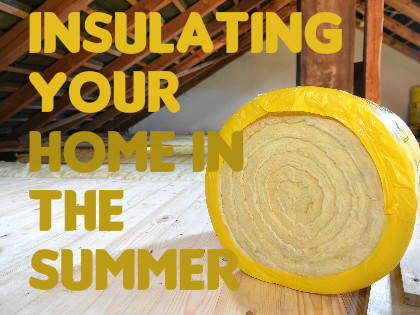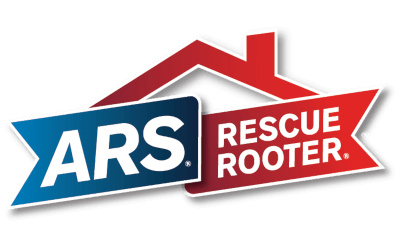Insulating Your Home in the Summer
 When you think of a poorly insulated home, you probably picture chilly rooms, drafty windows, frozen pipes and sky-high heating bills. But, insulation also plays a big role in your home’s summer comfort and cooling costs.
When you think of a poorly insulated home, you probably picture chilly rooms, drafty windows, frozen pipes and sky-high heating bills. But, insulation also plays a big role in your home’s summer comfort and cooling costs.How? Insulation blocks heat leaks—out or in!
Home insulation's job is to prevent the transfer of heat, whether that means keeping heated air in the house on a cold winter day, or shutting the dog days of summer outside where they belong.
Heat moves in three different ways: conduction (from your warm feet into an icy floor), convection (why it’s hotter upstairs than downstairs) and radiation (that warmth you feel from the sun or a cozy campfire).
Most home insulation that you think of combats the first two, conduction and convection. It works by filling gaps in your house’s construction (between wall studs, under floors, in the attic) with material that's harder to heat than the air and other building materials around it. This is important at any time of year.
Radiant heat, on the other hand, is a much more summer-specific problem and requires a different type of protection.
Reflective insulation and radiant heat barriers
When solar radiation heats your roof, that heat is transferred through a combination of conduction and convection throughout the rest of the home. Good insulation will slow that down, but what if you could stop the radiation before it can get inside?
That's the idea behind reflective insulation. Foil-backed kraft paper, plastic film or cardboard is placed against the underside of your rafters to deflect solar radiation before it can heat up your attic’s air and surfaces.
At ARS®/Rescue Rooter®, we take that technology one step further with a SolaShield™ spray-on radiant barrier coating that’s applied to the underside of your roof. This proprietary product blocks up to nearly 80% of the radiant heat that hits your roof, dramatically reducing the attic temperature.
The right mix matters.
Our Energy Efficient Attic® system combines effective insulation, proper attic ventilation and a radiant roof barrier to prevent heat gain and subsequent build up. It could even save up to 30% on your heating and cooling bills! Call 1-800-277-9400 to learn more.
How can I tell if I need better insulation?
- Check your energy bill. Some utility companies can tell you whether your home is using more energy than similar homes around you. If your provider can't supply that info, consider asking your neighbors about their typical heating and cooling costs. You may be surprised by the difference!
- Make sure your HVAC is working properly. If your heating and cooling equipment (and your thermostat) are working as they should, you shouldn't have trouble maintaining a reasonably comfortable temperature in your home. If you can't, or if the heating seems uneven in parts of your house, the insulation could be to blame.
- Take a look. Insulation that's not properly installed (or not there at all) may be simple to spot. If you have batt insulation, you may be able to find an R-value (its resistance to heat transfer) printed on the backing. The higher the R-value, the greater the resistance.
- Get a home energy audit. A free ARS®/Rescue Rooter® home energy audit is a good starting point when considering improvements to your home’s insulation. We’ll assess how much energy your home is using and the efficiency of your HVAC system, then make recommendations for repairs, additional insulation or equipment.
Why install insulation in the summer?
Why not? Installing insulation now will let you enjoy energy savings on your cooling bill for the rest of the summer. It could also prevent unnecessary wear and tear on your HVAC, since it won't have to work as hard to maintain the desired temperature. You may find that scheduling installation in the summer is easier, since other homeowners might not have insulation in mind before the weather starts to cool.
Why hire a pro?
While there are certainly some insulation projects you could tackle on your own, you might want to get input from a professional. They'll know how to help you improve your insulation while balancing ventilation needs and moisture control, and they'll be able to help you find the best products for your needs and budget.
Call an ARS®/Rescue Rooter® comfort advisor today to learn about the range of home insulation services we offer—including our Efficient Attic System®—and to schedule your free home energy audit: 1-800-277-9400.


